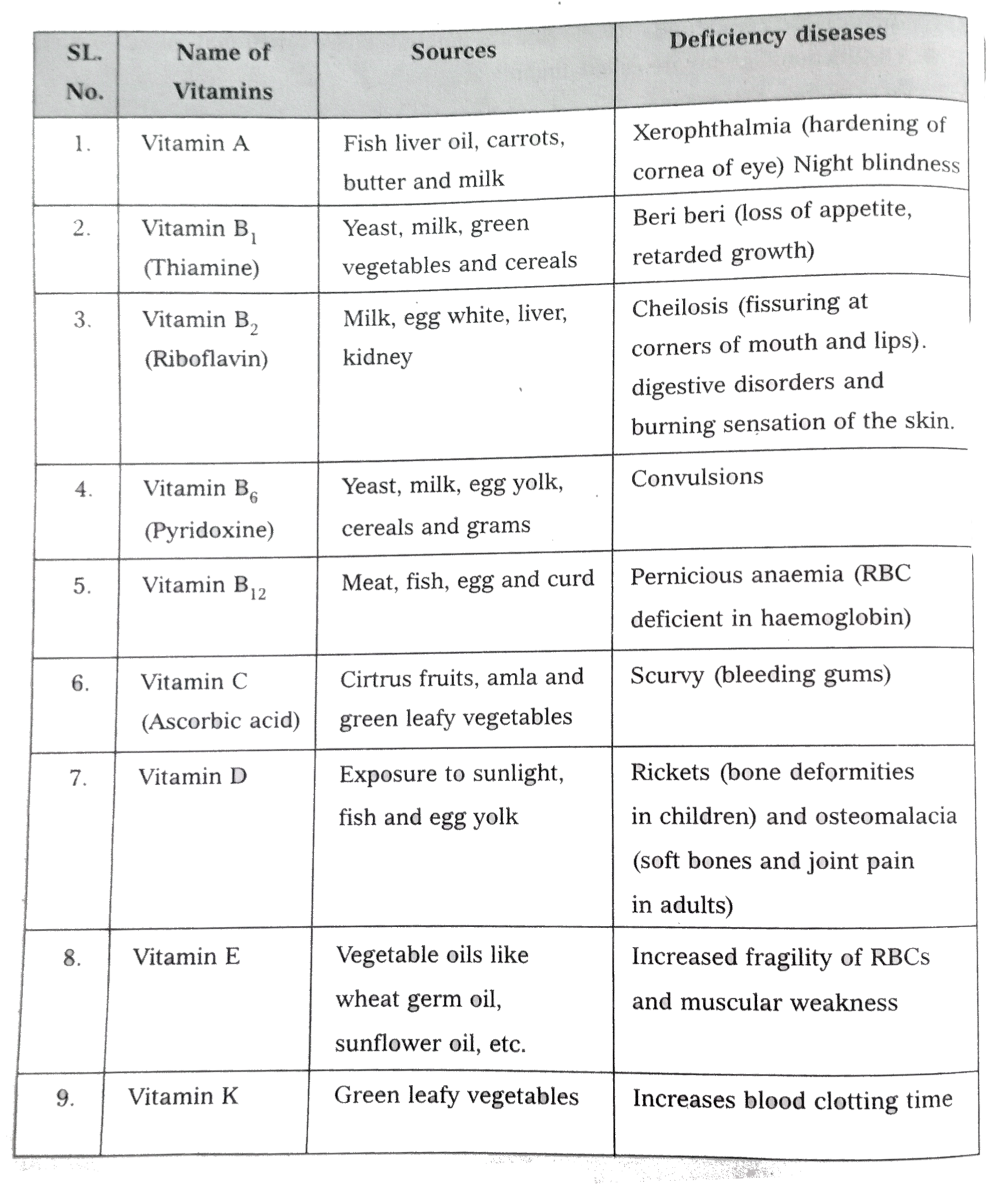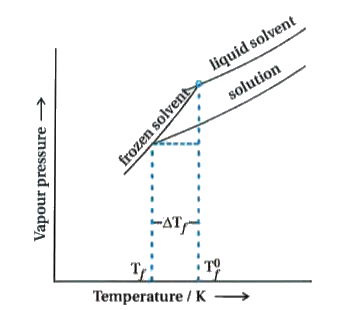InterviewSolution
This section includes InterviewSolutions, each offering curated multiple-choice questions to sharpen your knowledge and support exam preparation. Choose a topic below to get started.
| 2551. |
Which is correct relation for half life period (1_((1)/(2))) and Initial concentraion of reactant [R]_(0) for fourth order reaction. |
|
Answer» `t_((1)/(2))prop(1)/([R]_(0)^(-3))` |
|
| 2552. |
Write the conditions to maximise the yield of H_2SO_4 by Contact process. |
|
Answer» Solution :The main step in the preparation of `H_2SO_4` is the oxidation of `SO_2` to `SO_3` . `SO_2(g) + O_2(g) iff 2SO_3(g), Delta_f H^(@) = -196.6 kJ " mol"^(-1)`. The reaction is exothermic and reversible. The forward reaction proceeds with decreases in volume . Therefore, in accordance wiht Le Chatelier.s PRINCIPLE , to maximise the yield of `SO_3`, a low temperature `(720 K)` , a high pressure (2 bar ) are required. `V_2O_5` is used as a CATALYST . |
|
| 2553. |
Which of the following reagent can distinguish the given compound I & II ? |
| Answer» Solution :N//A | |
| 2554. |
Write IUPAC names of the following compounds and classify them into primary, secondary and tertiary amines. (i) (CH_(3))_(2)CHNH_(2) (ii) CH_(3)(CH_(2))_(2)NH_(2) (iii) CH_(3)NHCH(CH_(3))_(2) (iv) (CH_(3))_(3)CNH_(2) (v) C_(6)H_(5)NHCH_(3) (vi) (CH_(3)CH_(2))_(2)NCH_(3) (vii) m-BrC_(6)H_(4)NH_(2) |
|
Answer» SOLUTION :(i) Propan-2-amine `(1^(@))`, (ii) Propan-1-amine `(1^(@))` (iii) N-Methylpropan-2-amine `(2^(@))` (IV) 2-Methylpropan-2-amine `(3^(@))` (V) N-Methylbenzenamine or N-Methylaniline `(2^(@))`, (VI) N-Ethyl-N-methylethanamine `(3^(@))`, (vii) 3-Bromobenzenamine or 3-Bromoaniline `(1^(@))`. |
|
| 2555. |
This section contains Three questions. The section contains Two tables (each having 3 columns and 4 rows). Based on each table, there are THREE questions. Each question has FOUR options (A), [B]. [C], and [D]. ONLY ONE of these four options is correct. Answer Q. 1, 2 and 3 by appropriately matching the information given in the three columns of the following table. Q The CORRECT combination is: |
|
Answer» (I)(i)(Q) |
|
| 2556. |
Which of the following are known as mercaptans |
|
Answer» Thio-alcohols |
|
| 2557. |
Which is bad conductor of electricity: |
|
Answer» `H_2F_2` |
|
| 2558. |
The synthetic polymer which resembles natural rubber is : |
|
Answer» Neoprene |
|
| 2559. |
Write the structures of the following organic halogen compounds: (vii) 1-bromo-4-sec-butyl-2-methylbenzene |
Answer» SOLUTION :
|
|
| 2560. |
Which of the following is the correct resonance structure, of the species formed in the nucleophilicsubstitution of chlorobenzene with Z (a nucleophile) |
|
Answer»

|
|
| 2561. |
Ther rate of decomposition of a substance A becomes eight times when its concentration is doubled. What is the order of reaction? |
|
Answer» When the concentration of A is DOUBLED, the rate equation may be EXPRESSED as: rate (8r) = `(k[2A]^(n))` `(8r)/(r ) = (k[2A])^(n)/(k[A]^(n)` or `8=(2)^(n)` or `(2)^(3)=(2)^(n), n=3` (THIRD ORDER reaction) |
|
| 2562. |
Which of the following carbocations is most stable? |
|
Answer»
|
|
| 2563. |
Transitionmetalsshowhighmeltingpointswhy ? |
|
Answer» Solution :(I ) The meltingpointsof thetransitionmetalsare highdue to the 3DELECTRONS beingavailablefor metallicbonding (ii) As wemovefromleftto rightalong thetransitionmetal seriesmeltingpointfirstincresesas thenumberof unpairedd electronsavailable for metalllicbondingincreases , reacha maximumvalueandthendecreasesas THED electronspair up and becomelessavailablefor bonding . |
|
| 2564. |
U_(avg) speed of O_(2) at pi xx 10 bar pressure in a 8 litre container containg 2 moles is - |
|
Answer» `10^(3)` cm/sec PV = NRT `(RT)/(m) = (PV)/(w)` `P = 10 xx pi xx 10^(5) pa` `U_(avvg) = sqrt((8PV)/(pi w)) = sqrt((8 xx 10 xx pi 10^(5) xx 8)/(2 xx 32 xx pi)) = 10^(3) m//s` |
|
| 2565. |
What is [H^(+)] is mol/ L of a solution that is 0.20 M in CH_(3)CO ON a and 0.10 M in CH_(3)CO OH ? K_(a) for CH_(3)CO OH=1.8xx10^(-5) |
|
Answer» `3.5xx10^(-4)` `log[H^(+)]=log K_(a)-log [("Salt")/("Acid")]` `log [H^(+)]=log K_(a)+log [("Acid")/("Salt")]` `[H^(+)]=K_(a)[("Acid")/("Salt")]` `=1.8xx10^(-5)xx(0.1)/(0.2)=9XX10^(-6)` |
|
| 2566. |
Which of the following is not a biodegradable detergent ? |
|
Answer» `CH_3-(CH_2)_(8)-underset(O)underset(||)overset(O)overset(||)(S)-ONA` |
|
| 2567. |
What is the electron configuration of chromium? |
| Answer» Solution :Cr(24): [Ar]`3D^(5) 4s^(10)` | |
| 2568. |
When formaldehyde react with ethyl amine , it gives |
|
Answer» FORMALDEHYDE imine |
|
| 2569. |
Which of the following hydrocarbons cannot be obtained Sabatier and Senderens reaction |
|
Answer» `CH_4` `CH_2=CH_2 +H_2 OVERSET"NI"to CH_3-CH_3` `CH-=CH+2H_2 overset"Ni"to CH_3-CH_3` |
|
| 2570. |
Toilet soap is : |
|
Answer» A MIXTURE of calcium and sodium SALTS of HIGHER fatty acids |
|
| 2571. |
Total no. of vacant orbitals in valence shell of sulphur when it undergoes formation of SF_(4) :- |
|
Answer» 5 |
|
| 2572. |
Which of the following are amphoteric oxides ?Mn_(2)O_(7) , CrO_(3) , Cr_(2)O_(3) , CrO, V_(2)O_(5), V_(2) O_(4) |
|
Answer» `V_(2)O_(5), Cr_(2)o_(3)` |
|
| 2573. |
Which of the following statements are correct about phenol-formaldehyde resin? |
|
Answer» NOVOLAC or resol is a linear polymer and is used in the manufacture of adhesive. |
|
| 2574. |
What is the effect of the addition of sugar on the boiling and freezing points of water |
|
Answer» Both BOILING POINT and freezing point increases |
|
| 2575. |
When the dispersed phase has a greater affinity for the dispersion medium, the colloids are termed as |
|
Answer» Lyophilic |
|
| 2576. |
What is the mole fraction of argon in air? |
| Answer» Solution :The volume PERCENTAGE of Ar in air is 0.94.The mole percentage of Ar is 0.94. The mole FRACTION of argon is 0.0094. (Avogadro.s concept of equal VOLUMES and equal MOLES). | |
| 2577. |
What is the "X" in the following reaction 2CH_3 COCH_3 overset(Ba(OH)_2 ) too X |
|
Answer» `CH_3-OVERSET(OH)overset(|)UNDERSET(CH_3)underset(|)C-CH_2-underset(O)underset(||)C-CH_3` |
|
| 2578. |
Write notes on vitamins. |
|
Answer» Solution :Vitaminis defined as an "accessory food FACTOR which is essential for GROWTH and healthy maintenance of body". Classification : Vitamins are broadly classified into two major groups a) the at soluble EG : VITAMIN A, D, E and K b) WATER soluble Eg: vitamin B - complex and C. 
|
|
| 2579. |
Which one of following has temporary bleaching action? |
| Answer» Solution :`SO_(2)` | |
| 2580. |
Thermal decomposition of gaseous X_(2) to gaseous X at 298 K takes place according to the following equation : X_(2)(g) 2X(g) The standard reaction Gibbs energy, Delta_(r)G°, of this reaction is positive. At the start of the reaction, there is one moe of X_(2) and no X. As the reaction proceeds, the number of moles of X formed is given by beta. Thus, beta_("equilibrium") is the number of moles of X formed at equilibrium. The reaction is carried out at a constant total pressure of 2 bar. Consider the gases to behave ideally. (Given : R = 0.083 L bar K^(-1) mol^(-1)) The equilibrium constant K_(p) for this reaction at 298 K, in terms of beta_("equilibrium"), is |
|
Answer» `(8beta_("EQUILIBRIUM")^(2))/(2-beta_("equilibrium"))` |
|
| 2581. |
Which of the following complex compound exhibits geometrical isomerism ? |
|
Answer» `[CoCl(NH_(3))_(4)(H_(2)O)]` |
|
| 2582. |
Thermal decomposition of gaseous X_(2) to gaseous X at 298 K takes place according to the following equation : X_(2)(g) 2X(g) The standard reaction Gibbs energy, Delta_(r)G°, of this reaction is positive. At the start of the reaction, there is one moe of X_(2) and no X. As the reaction proceeds, the number of moles of X formed is given by beta. Thus, beta_("equilibrium") is the number of moles of X formed at equilibrium. The reaction is carried out at a constant total pressure of 2 bar. Consider the gases to behave ideally. (Given : R = 0.083 L bar K^(-1) mol^(-1)) The Incorrect statement among the following, for this reaction is |
|
Answer» Decrease in the total pressure will result in FORMATION of more moles of GASEOUS X |
|
| 2583. |
Write the IUPAC names of the following . |
|
Answer» SOLUTION :(i) 2-iodotoluene (II). 1-chloro-2-phenlethane (IIII) 2-Nitrotoluene. |
|
| 2584. |
Which of the these does not influence the rate of reaction.. |
|
Answer» NATURE of the reactants |
|
| 2585. |
What is the best description of the change that occurs when Na_(2)O(s) is dissolved in water ? |
|
Answer» OXIDE ION accepts sharing in a pair of electrons |
|
| 2586. |
Which of the following is correct for P_(4) molecule of white phosphorus ? |
|
Answer» It has 6 lone pairs of electrons |
|
| 2587. |
The total number of unpaired electrons present in phosphorus in ground state is: |
|
Answer» 8 |
|
| 2588. |
What is molal depression constant (K_(f)) ? Derive equation relating K_(f) with molar mass of solute. |
|
Answer» SOLUTION :Decrease in freezing point of a solution prepared by dissolving one gram molar mass of non - volatile solute into one kilogram of solvent is called MOLAL depresion constant. Let `T_(f)^(0)` be the freezing point of PURE solvent and `T_(f)` be its freezing point when non - volatile solute is dissolved in it. The decrease in freezing point. `Delta T_(f)=T_(f)^(0)-T_(f)` is known as depression in freezing point. For dilute solution (ideal solution) is directly PROPORTIONAL to MOLALITY, m of the solution. Thus, `Delta T_(f)prop m` `Delta T_(f)=K_(f).m ""`....(i) The proportionality constant `K_(f)`, which depends on the nature of the solvent is known as Freezing Point Depression Constant or Molal Depression Constant or Cryoscopic Constant. The unit of `K_(f)` is K kg `mol^(-1)`.  If `w_(2)` gram of the solute having molar mass as `M_(2)`, present in `w_(1)` gram of solvent, produces the depression in freezing point `Delta T_(f)` of the solvent then molality of the solute is given by the equation. `m=(w_(2)//M_(2))/(w_(1)//1000)` Substituting this value of molality in equation (i) we get, `Delta T_(f)=(K_(f)xx w_(2)//M_(2))/(w_(1)//1000)` `Delta T_(f)=(K_(f)xx w_(2)xx1000)/(w_(1)xx M_(2))` `M_(2)=(K_(f)xx w_(2)xx 1000)/(Delta T_(f)xx w_(1))` |
|
| 2589. |
Whichof theorescan beconcentratedbymagnetic separationmethod ? |
| Answer» Solution :Ores whicharemagneticinnaturecanbeseparatedfrom thenon- magneticgangueparticles bymagneticseparation. FOREXAMPLE, ores ofironsuchashaematite` (Fe_2 O_ 3) ` , magnetic` (Fe_3O _4)`, siderite `(FeCO_3) `and IRONPYRITES`(FeS_2) `being magnetic can beseparartedfrom non-magneticsilicaand otherimpuritiesby magneticseparationmethod. | |
| 2591. |
Which of the following base pairs are found in DNA and which of them in RNA ? (i) A:A (ii) A:T (iii) C:G (iv) G:C (v) G:A (vi) A:U , (vii) G:U and (viii)A:C . |
| Answer» SOLUTION :DNA : (ii), (III) , (iv) , RNA :(iv) . | |
| 2592. |
The volume of NH_(3) obtained by the combination of 10mL of N_(2) and 30 mL of H_(2) is |
|
Answer» 20 mL `1 VOL"" 3 vol rarr 2 vol` `10 mL"" 30 mL rarr 20 mL` |
|
| 2593. |
What is the IUPAC name of Na_(2)[Z_(n)(CN)_(4)]? |
| Answer» SOLUTION :`Na_(2)[Z_(n)(CN)_(4)]`: SODIUM tetracyanozincate (II). | |
| 2594. |
Which form of the iron is the purest form of commercial iron? |
| Answer» SOLUTION :WROUGHT iron is the purest FORM of COMMERCIAL iron. | |
| 2595. |
Which vitamin is closely involved in the formation of collegent-protein present in connective tissues and bones |
|
Answer» Riboflavin |
|
| 2596. |
Which removes temporary hardness of water and is used in the manufacture of bleaching powder? |
| Answer» Answer :A | |
| 2597. |
Which of the following is used in artheritis? |
|
Answer» 2-acetoxobnzoic ACID |
|
| 2598. |
The vapour density of a sample of N_(2)O_(4) gas is 35. What percent of N_(2)O_(4) molecules are dissociated into NO_(2) ? |
|
Answer» |
|
| 2599. |
Which of the following acids in most reactive towards esterification with cyclohexanol ? |
|
Answer» `CH_(3)COOH` |
|
| 2600. |
Which of the following has the highest value of dipole movement? |
|
Answer» HF |
|